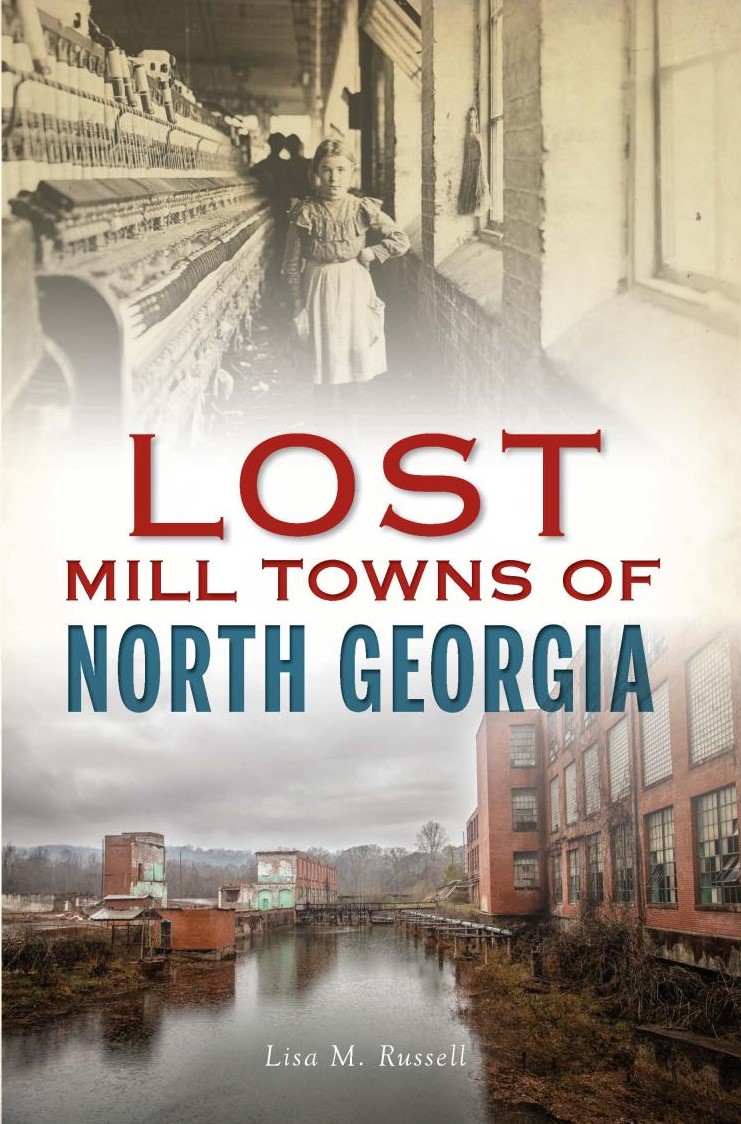Boasting their own schools, churches, recreation centers, stores and modern housing, the mill villages that proliferated in North Georgia from Reconstruction up until the New Deal had everything workers needed without ever having to leave.
But they did leave eventually, once the mills closed and textile jobs moved overseas.
The way of life they left behind and its physical remnants are the subject of Georgia Author of the Year nominee Lisa Russell's newest book, "The Lost Mill Towns of North Georgia."
After the Civil War, industrialists from the North came down South, bringing the cotton mills closer to the cotton fields. After a century of poor farming practice, farms in the area were failing by the late 1800s and early 1900s, and farmers were drawn to the benefits the mills offered workers.
"They did have to pay a little bit of a rent, but the houses were much better than living on a farm with no electricity, no water, no bathroom," Russell said. "So they went uptown and started getting a paycheck instead of worrying about the crops and living hand to mouth."
North Georgia had few mills operating prior to 1880, but by the 1920s textile mills were the area's largest employers.
Rossville was home to one of the largest, Richmond Hosiery Mill, established in 1898; and in 1903, LaFayette Cotton Mills opened in LaFayette, which Russell described in her book as "situated in a beautiful bouquet of mountains."
Among the benefits offered to workers at LaFayette Cotton Mills were barns in a nearby pasture equipped with automatic water troughs, where each family was allowed to keep one cow and one pig, according to a passage in Russell's book that she gleaned from a 1920 article in "Great Southern Weekly for Textile Workers."
The homes constructed for mill workers also had running water and electricity, and could be reached via concrete sidewalks lining each street, Russell wrote.
But mill life wasn't always as pleasant as advertised.
Households renting from Richmond Hosiery Mill had to send at least one worker to the mill for each room in the home - and that included children ages 12-16.
Images captured by Lewis Hine of children working in mills across the South, including Richmond Hosiery Mill, for the National Child Labor Committee helped influence lawmakers to abolish this practice, Russell said.
She feels that the history of these towns has plenty of lessons that can be applied today.
"I don't think we'll ever get back the whole textile industry, but it would be nice to see something being built here, instead of just all computer and service," Russell said of the dominant industries in the U.S. today.
To find out more or to purchase the book, visit lisamrussell.net.
Contact Emily Crisman at ecrisman@timesfreepress.com.
![Library of Congress, Prints & Photographs Division, National Child Labor Committee Collection, [LC-DIG-nclc-01975] / One of the young girls working in the Richmond Hosiery Co. in Rossville, Ga.](https://wehco.media.clients.ellingtoncms.com/timesfreepress/img/photos/2021/06/29/richmondhosiery6112184426_t800.jpg?90232451fbcadccc64a17de7521d859a8f88077d)
